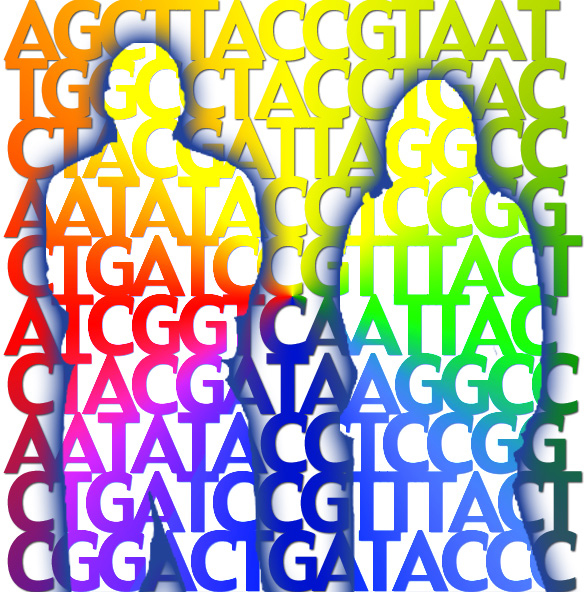
Today is National DNA Day!
IBM today announced its researchers have discovered numerous DNA patterns shared by areas of the human genome that were thought to have little or no influence on its function and those areas that do.
As reported today in the Proceedings of the National Academy of Sciences (PNAS), regions of the human genome that were assumed to largely contain evolutionary leftovers (called “junk DNA”) may actually hold significant clues that can add to scientists’ understanding of cellular processes. IBM researchers have discovered that these regions contain numerous, short DNA “motifs,” or repeating sequence fragments, which also are present in the parts of the genome that give rise to proteins.
If verified experimentally, the discovery suggests a potential connection between these coding and non-coding parts of the human genome that could have a profound impact on genomic research and provide important insights on the workings of cells.
The IBM team used a mathematical tool called pattern-discovery, often applied to mine useful information from very large repositories of data in both business and scientific applications, to sift through the approximately six billion letters in the non-coding regions of the human genome and look for repeating sequence fragments, or motifs.
We live in the era when computational analysis begins to have enough horsepower to make a difference in just about all the sciences.















Celebrate National DNA Day! Take a creationist to lunch. Feed ’em something decayed.
The role of exons in the regulation of many aspects of dna replication, repair and function has been know for at least 10 years.
The only thing new about this is that IBM has a new method for finding possible patterns.
Its not hard to get into PNAS – you just need the approval of one member of the NAS to get an article in.
If this was really new it would be in Nature or Science.
Naw, take a vegetarian creationist to lunch and feed them meat.
Comments #1 and #3 seem to be irrelevant. Comment #2, while the conditions to publish in PNAS are true, needs to be addressed.
There is absolutely no way to belittle either the novelty or the significance of findings of Rigoutsos et al. (2006). First (regarding novelty), nobody has shown thus far the 66 million self-similar motifs and 128,000 pyknon-s in the (human) DNA. Now, with the Teiresias algorithm public and thus the results can be reproduced, every one of us are forced to take these findings as they are – a fact, that the genome is packed with self-similar repetitions.
We must recall, that Malcolm J. Simons already “sensed” (based on naked-eye investigation and human pattern recognition) such a massive amount of such self-similar repetitions that he bet his life in more than one ways since 1987 that the “Junk DNA could not be junk – it was far too patterned”. While he was literally ridiculed (for lack of substantiation such as by this IBM paper), he submitted patents how such patterns can be used for diagnosis. These patents (now issued both in the USA and Internationally) amount to a $100 M company (GTG, traded in NYSE under “Gene”). It is too bad that Malcolm Simons (66) suffers from a “Junk DNA disease”, does not get a penny from the Company – and hundreds of millions are dying of “Junk DNA diseases” that New York Times estimated to number up to 150,000.
We know that even Single Nucleotide Polymorphisms (SNPs), i.e. just one A,C,T or G letter may make such a difference that can be a life or death for a person.
Authors of the IBM paper probably intentionally did not make anything of their discovery of pyknon-s. We may wish to recall that Watson and Crick in their one page paper (1953) only went this far:
“It has not escaped our notice that the specific pairing we have postulated immediately suggests a possible copying mechanism for the genetic material”.
It is not necessarily up to the discoverers of pykon-s to explore and exploit all implications of the facts.
One possible interpretation is that the now documented pykon-s are the material basis of the FractoGene approach .
For (much) more background on this subject, see
Dr. Pellionisz